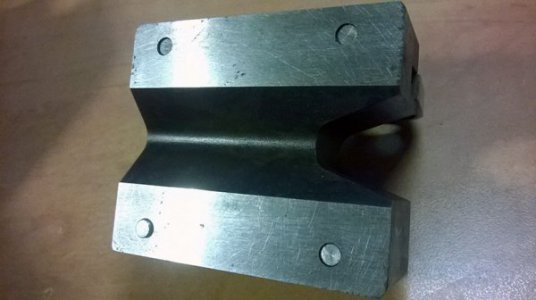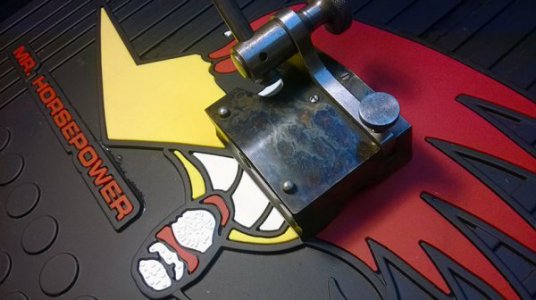- Joined
- Oct 4, 2016
- Messages
- 9
I recently picked up a used Starrett surface gage (257?), and while it appears to be in really good condition for the price I paid, there are some nicks and corrosion significant enough to catch a fingernail.
I did a little searching around the forums, but I couldn't find anything about cleaning up the surface of a surface gage - mostly just ways to chemically remove oxide from tools in general.
So does anyone have a proper method for cleaning up the surface? My first instinct was Scotch-Brite, but I'm suspecting that won't do much for the roughness, even if I remove the oxides.
My second thought was a quick lap with >1000 grit wet/dry laid down on my surface plate - however, given that it's a Starrett surface gage, and a Grizzly surface plate, I think I might do more harm than good with that approach.
My last thought was a quick stoning with a fine India or Arkansas stone, but again, I'm not sure if I'd be doing more harm than good.
I've attached a picture (below) of what I'm talking about. It's minimal, really, but worth tending to - and I'd like to do it right.
Advice?
Thanks!

I did a little searching around the forums, but I couldn't find anything about cleaning up the surface of a surface gage - mostly just ways to chemically remove oxide from tools in general.
So does anyone have a proper method for cleaning up the surface? My first instinct was Scotch-Brite, but I'm suspecting that won't do much for the roughness, even if I remove the oxides.
My second thought was a quick lap with >1000 grit wet/dry laid down on my surface plate - however, given that it's a Starrett surface gage, and a Grizzly surface plate, I think I might do more harm than good with that approach.
My last thought was a quick stoning with a fine India or Arkansas stone, but again, I'm not sure if I'd be doing more harm than good.
I've attached a picture (below) of what I'm talking about. It's minimal, really, but worth tending to - and I'd like to do it right.
Advice?
Thanks!



